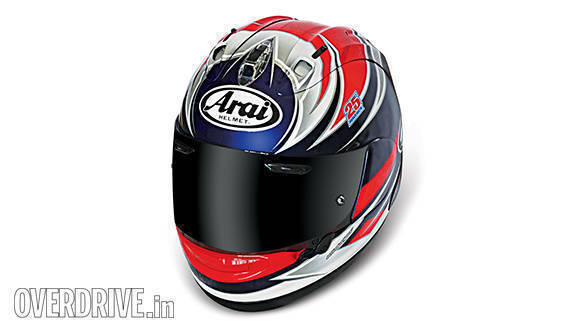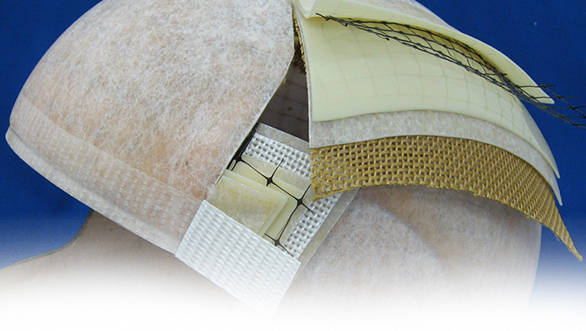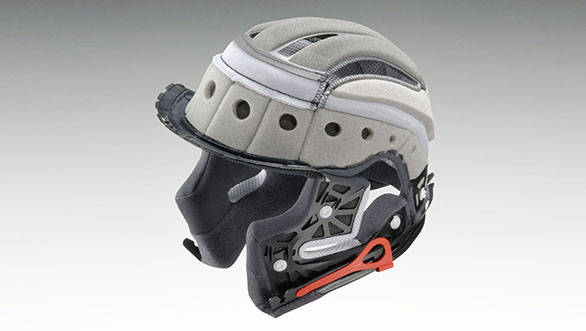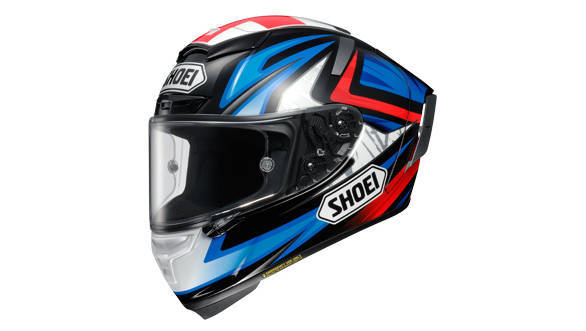Every bullshit helmet argument answered
People die. It happens all the time and it's as regular as the heartbeat of a living person. As I've pointed out before, including in the context of my own wife, no one here's getting out alive. But human beings (and all organism) are conditioned to preserve their own lives. Humans just seem to have some of the most indigenously developed solutions. In there are motorcycle helmets.
This column was born in a rather circular discussion that started with how J Nandakumar, a young motorcycle racer died recently at the Kari Motor Speedway during an event.
Riders dying no matter the circumstance is a very sad day. I always take solace in the idea that the dead are no longer in pain and that motorcyclists who die riding pass away doing the thing they love. This doesn't help the families who must deal with the loss of course. I can only wish peace and strength for them.
Back to the current and a lot of the blame - details are scarce - is being placed on the helmet which empirically is being blamed as having failed to protect the rider.
This column is not about that. I don't know the details and so I don't know if the helmet failed to do its job. I just don't know enough about the circumstances to comment. But I do see that the helmet-focused discussion shows alarming misinformation and sometimes just outright bullshit surrounding motorcycle helmets. Here is my attempt to clear the motorcycle helmet knowledge mess up as much as I can.

Dying and hurting
Helmets do a simple job. The EPS liner inside reduces the g forces your brain has to deal with in a crash. A good helmet will reduce the gs to a level your brain can survive. The shell prevents sharp objects from penetrating but its primary job is to spread impacts over a larger area to reduce spot forces and to alter the direction of the impact if possible to reduce the forces your neck has to deal with. The latter is why shells are as round as possible.

So a good helmet might be able to reduce a potentially fatal impact into, say, a treatable/survivable concussion. However, human ingenuity and bravery means it is entirely possible to have impacts that are far beyond the capability of a helmet's preventive abilities. In which case, people die.
The top helmets are excellent today and we've pushed the force limits at which a helmet cannot prevent fatal head injuries far, far away but the Grim Reaper is unstoppable. Eventually, one way or another, he gets you.
The riding environment
I've often heard the argument that a street helmet should not be on track, or that people have two helmets, a cheap one for daily use and a more expensive one for touring/weekends/track use. This is crazy!
I believe my head deserves the best protection I can secure for it. So why would I use a less capable helmet in any environment at all? It doesn't make any sense. The idiotic notion is also erroneous because all accident statistics show that you're most likely to have an incident within 5km of your home or work - the exact environment you've classified as worthy of a cheap helmet!
Most helmet makers reserve their top helmets for use on the race track. That means they're designed for that purpose. So the shell materials, EPS liners, comfort liners, visors, retention and venting are all at the very top of the component-level performance the helmet maker can muster. These are usually worn for short, intense durations so things like noise and comfort can take a back seat in the quest for protection.

I've been wearing race lids since I got my Shoei X-11 roughly seven years ago. I can tell you categorically that I will not wear anything less. My current lids, a two-year old Shoei X-12 and a year old Arai RX-7V, are used for all rides in all conditions. I never show up for a ride, on my own bike or at a manufacturers without either of these two.
My head is of great value to me. Its importance does not change based on the bike I'm riding, the speeds I am going at or the place I'm riding through. So the horses for courses argument doesn't work in the context of motorcycle helmets.
Cheap helmets and expensive helmets
The best protection argument is easy to dissipate by saying you don't have Rs 50,000 to spend on a good one. Well, bullshit.
First, until you have a helmet that you think matches the importance of your head, you shouldn't be riding. Again, this is context-free. It doesn't matter what bike you have.
Second, if you have a smartphone you did in fact have the money to purchase a really good helmet and you chose where to spend that money.

Third, you value your head for yourself. So if you ride around with a cheap helmet which you know doesn't meet your own standard you're just revealing how little you value your head. This is your problem, not mine. But you do have a problem that requires fixing urgently.
Finally, a cheap helmet isn't automatically a bad one. And an expensive helmet isn't automatically awesome either. Like every mission-critical purchase, buying a helmet needs more than a budget. It needs your time and attention, information, research, effort and only finally, money.
The helmet standards
The world is full of honour-based helmet standards systems. The Indian BSI (ISI mark) and the US DOT are both honour based. That means a helmet maker is expected to be able to certify his own helmets meet the standard using his own testing lab. If business morals and ethics as well as liability laws are strong, this model works. If not, a maker will add compliance stickers in the expectation that the statistical probability of his lax attitude killing someone is small. Oh yes. ISI isn't good enough for me. It's a start, but for me personally, that's all it is.
Worse, I've seen a helmet maker instruct his marketing chief to start adding ISI stickers to his new line of helmets as an off-hand remark so I know the compliance process is iffy at best.
My head's too valuable for this. If I've to pay a fine every day to wear a helmet that vastly exceeds this standard, I'm happy to comply.
The independently tested standards are all non-Indian. ECE22.05, UK's SHARP and the independent American Snell standard are the most commonly discussed.
Of these SHARP is considered the most well-rounded standard. It incorporates things like comfort in addition to safety and protection. I disagree with this approach. Helmets should be certified for crash performance alone. If any other attributes are assessed they must, in my book, go into a different rating. I cannot imagine buying a helmet that gets a superb overall rating because it has average crash protection but outstanding comfort. That's crazy!
The ECE22.05 is considered the gold standard. This has been repeatedly confirmed to me by all kinds of helmet makers.
Snell is considered to be above this. There is some criticism that meeting Snell produces hard shells that offer tremendous high impact protection but can aggravate neck injuries in smaller incidents. This is a trade-off that I am comfortable with.
I am not saying you should be, though. I am suggesting that you should care enough to find out more and make your own decision on this matter. Me? Both my helmets meet or exceed the ECE22.05 and whatever was the latest Snell test at the time when I purchased them.
Buying a helmet
There is the matter of the fit of the helmet. No matter how good the deal is, you should not be buying one if it doesn't fit you. The biggest challenge I have with Indian brands as well as these new (unknown origin) brands is finding a helmet in a size that fits. The fit is crucial to its effectiveness so if the maker or dealer cannot be bothered to find me the fit I want, I will walk away from a great deal on an otherwise great helmet. The head rules over the wallet.
There is also the argument that such and such helmet is perfect but unavailable in India. That's a silly argument in today's day and age. There are enough people who will happily help you source a helmet from outside India. This is additional time and money to be sure and let's be honest, most of us are too lazy to get in there and make the effort.
Fundamentally, if you can come up with a reason why you're riding with a helmet even you think is substandard, I can say with great confidence that you should not be riding a two-wheeler.
Keeping a helmet
Helmets need to be kept carefully. This is not optional. My helmets don't look brand new despite 50-70,000km of riding each year by magic or minion. I keep them clean. I keep them on the ground so they cannot fall down. I keep them away from scratches and casual knocking about. And I won't loan them because my head - the most valuable of all my possessions - goes in it. You have to do this if the helmet is to protect you.
It also means you have to know that the helmet has a shelf life. My Shoei X-11 Kagayama is carefully preserved and kept. But it was retired as soon as it turned five. It's never been crashed or scratched or dropped. But it's life is over. It's a mere bauble now. It lived a good life. It never was called upon to protect me. I'm grateful and happy about this.
Try not to crash
That's a fantastic argument. The motorcycle has not yet reached the point where all crashes are preventable. There is an argument to be made that an un-crasheable motorcycle would be boring too but that's a separate story. Pragmatically speaking, you will have a crash if you're riding. Not today hopefully but eventually. Since we cannot predict the timing or circumstances, best to have the best protection whenever you're riding.
The government is not doing enough. If the government truly cared about two-wheeler riders you'd hear a lot more about public transport than helmets and airbags. Because the best way to protect two-wheeler riders is to give them the choice of not having to ride to get around.
The Government's role
Next comes the enforcement of helmet standards as well as helmet laws. Which we all know is not as a critical a priority as it should be given how many people die on our roads every year. This government is a lot more vocal on this subject than others so far but a lot more still needs to be done apart from talking about it.
That way I see it, every time a crash test failure of a car hijacks the two-wheeler fatality discussion, the government betrays the fact that it's addressing the media and not the problem.
Final words
People die. Including riders wearing top of the line helmets. Probabilities are that this will not happen to any one us. But it can. We motorcyclists have at our disposal the machines that I believe are the very best at making us feel alive and free. What we are required to do, all we are required to do, is pay attention to how we prepare ourselves to enjoy them. A good helmet that you trust is a great, vital starting point.
I'm not telling you what to buy. This isn't about Shoeis or Arais outside of them being brands I trust to protect my head. This isn't a prescription.
But study and carefully choose the brands you trust. Wear their products because you believe they haven't cut corners. Be hard to please in this regard - there is no such thing as too good a helmet for your head.














